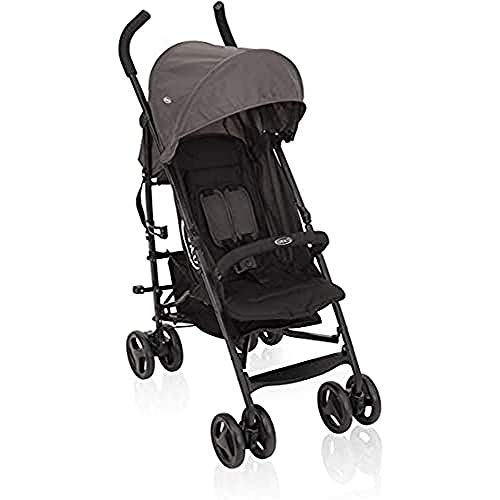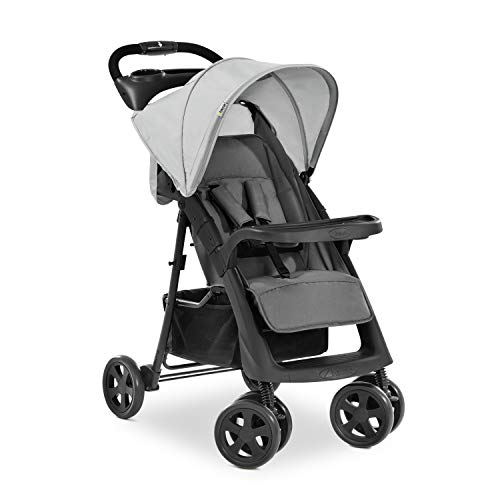 Choosing Pushchairs For Your Baby
Choosing Pushchairs For Your Baby
A stroller, buggy, or pushchair is a form of transport for children who are young. Prams are equipped with a carry cot, bassinet or frame to attach an the cot. Babies must be laid flat.
Once your baby can sit up and has a good head-control and head control, you can use the stroller with an incline that is facing away or towards you. Many pushchairs come with useful features, such as swivel wheel or enclosed carrycots. They can be used as 3 in 1 systems.
Rear-facing
When it comes time to choose a pushchair for your brand new baby, there are plenty of options to choose from including prams and pushchairs, to strollers and buggies. Although the terms are similar, there are important differences. A pram is designed to lie flat, whereas a pushchair offers a seated position. Some babies can be seated in both, but others require a carrycot until their necks and heads are strong enough to support them in a sitting position.
Many experts agree that it’s ideal to use a parent-facing pushchair for infants as young as a few months of age. Babies enjoy looking at their parents and the visual connection it creates. This eye contact is essential to their emotional development as they begin to process the information around them. They also begin to develop the ability to communicate by watching the way their parents interact with them.
When babies can see their parents, it gives them an assurance of security and trust. They know they can count on their parents to safeguard their children and assist them in navigating their surroundings. This early trust can contribute to a child’s overall confidence and well-being when they grow into toddlers and discover the world on their own.
A pushchair newborn that is positioned for parents allows you to easily check on your baby while they are in their seat. You can quickly check if your child is safe and content. Also, you can ensure that their hat isn’t over their eyes and the wind isn’t blowing on their face. Babies who are able to see their parents are more likely to drift off to sleep as they feel reassured by the familiarity of their faces.
There are plenty of options for parents who would like to keep your baby in a pushchair facing the parent for as long as possible. Some pushchairs can be switched between parent-facing or forward-facing, and some have an extendable footmuff that can keep the cold out or a rain cover to shield your child from the elements. The Eezy S Twist+2 is an excellent model of a flexible pushchair that can switch from a parent-facing model to a forward-facing seat unit with the push of an lever. It can also be paired with an Cocoon S car seat, Cot S or carrycot to create an all-in-one Travel System.
Forward-facing
A pushchair cheap that is facing forward allows children to explore and take in the sights as well as the sounds and smells of their surroundings. The baby also has the ability to see his parents, which is essential for social development. At around six months, based on their developmental milestones and age generally, babies are ready to move from a baby carrycot or pram to a pushchair facing inwards. This is when they will have acquired enough head and neck control to be secure in a forward-facing position.
Research shows that when babies face their parents from the front of a pushchair they are more likely to speak back and have a reduced heart rate, which suggests that they feel less stressed. They also pay more attention to what’s happening within their surroundings and with their parents. This stimulates their minds and improve their language skills. Parents are also more likely to talk to their baby if they can make eye-contact with them. This is soothing and comforting for them.
It is possible to use a pushchair with a front-facing seat since the time of birth. This lets you take longer walks. You can take your child shopping or take them to other activities that require walking. A pushchair or stroller will also allow your child to participate in the same activities as their older siblings, which will help them build self-esteem and confidence.
You should look for a pushchair that has many accessories, including a pram blanket, footmuff and seat liner. A hood and a parasol are crucial for helping to protect your baby from the sun, particularly during hot temperatures. Find a parasol that is SPF- or UV 50+ rating, and ensure it’s made to fit in your pushchair and is easy to attach. The majority of brands offer a variety of accessories that could be included with the pushchair, whilst others are available on their own.
Many pushchairs from birth – mouse click the next web page, can be converted into double by adding a second seat unit or carrycot. This is particularly useful for families expecting a second child soon after the first. Some models include everything you need for the conversion, whereas others have a separate converter kit.
All-terrain
If you live along a country road, enjoy walking in the woods or go hiking often then you’ll require a pushchair designed for rough and bumpy terrain. All-terrain strollers are designed to take on any terrain. They are equipped with features like suspension that cushions bumpy rides to ensure your child won’t be shaken up. They also come with seats that are angled to spread the force and impact of the bumpy ground equally over your child’s neck and head and neck, ensuring that they don’t get shaken more than they would in a stroller that is less durable.
Most all-terrain strollers are three-wheelers, with a front wheel which can be swiveled and locked in place to offer maximum maneuverability. This is essential when you’re on rough surfaces. They also have larger tires compared to your average pushchair. This means that they are able to handle more rough terrain, and provide the most comfortable ride for you child.
Another aspect to take into consideration when looking for an all-terrain pushchair is whether the wheels are filled with foam or air. Air-filled tyres are smoother on rough terrain, but they can puncture more easily when you come into contact with sharp objects. Foam-filled tyres last longer and are less likely to puncture, which is why they are a better choice for an all-terrain pushchair.
Many all-terrain pushchairs can be converted from single to double mode for a growing family, and some can even be used as a travel set-up with car seat adaptors, making them great purchase for parents who are expecting. Certain models, like the Out ‘n’ About Nipper are suitable for babies due to their slender seats, and the fact that you can use a carrying cot with these models.
The Nipper comes with a variety of accessories for pushchairs including a footmuff as well as raincover. It is easy to store since it folds down with just one hand, and it stands on its own when folded. It also has a 360 swivel lockable front wheel and foam-filled never-flat tyres. This means you don’t have to worry about getting a puncture on your walks.
Weight
Selecting the right pushchair is a major choice that will impact the how you take your baby. The best model will allow your child to develop and grow in comfort while allowing you to enjoy all the family adventures to be. This is a major investment, so ensure you choose one that suits your lifestyle and budget.
Understanding the differences between a buggy, a travel system and one pushchair is the first step. This guide will break down the jargon to make it easier for parents to decide which is the best option for their child’s new arrival.
As the name suggests, a pram is designed for newborns or babies up to 6 months of age. It allows your baby’s back to develop properly, by allowing them sleep on their backs. Some models come with a bassinet which can be used in the beginning of the year to provide your baby with an environment that is safe and comfortable for your baby.
However, you must be aware that not all pushchairs that claim they can lie flat actually can do this. Be wary of claims from manufacturers that their pushchairs can recline flat. Always look over the fine print to find out what it really means. Some pushchairs only allow a small amount of recline, which is more than a fully-reclining seat.
Once your baby is old enough to sit up unassisted, it’s time to transition them into the pushchair seat. This usually occurs between three to four months. However, some babies will start sitting up earlier. It is recommended to purchase a pushchair that is able to transform from a carrycot to an actual seat, so you have flexibility and ensure your baby’s safety until they are ready for the next stage.
A light pushchair with a single pedal brake is frequently favored by parents, especially those who want to to talk with friends or use their hands for carrying shopping bags. Our MFM home test Jessica gave this pushchair the thumbs up, stating that “it is extremely well-handled, with a wonderful, smooth ride, and the one-handed fold is amazing”. The lightweight model is equipped with Tru-Ride tyres that are durable puncture-resistant, and offer high performance.

 by esperanza13f
by esperanza13f